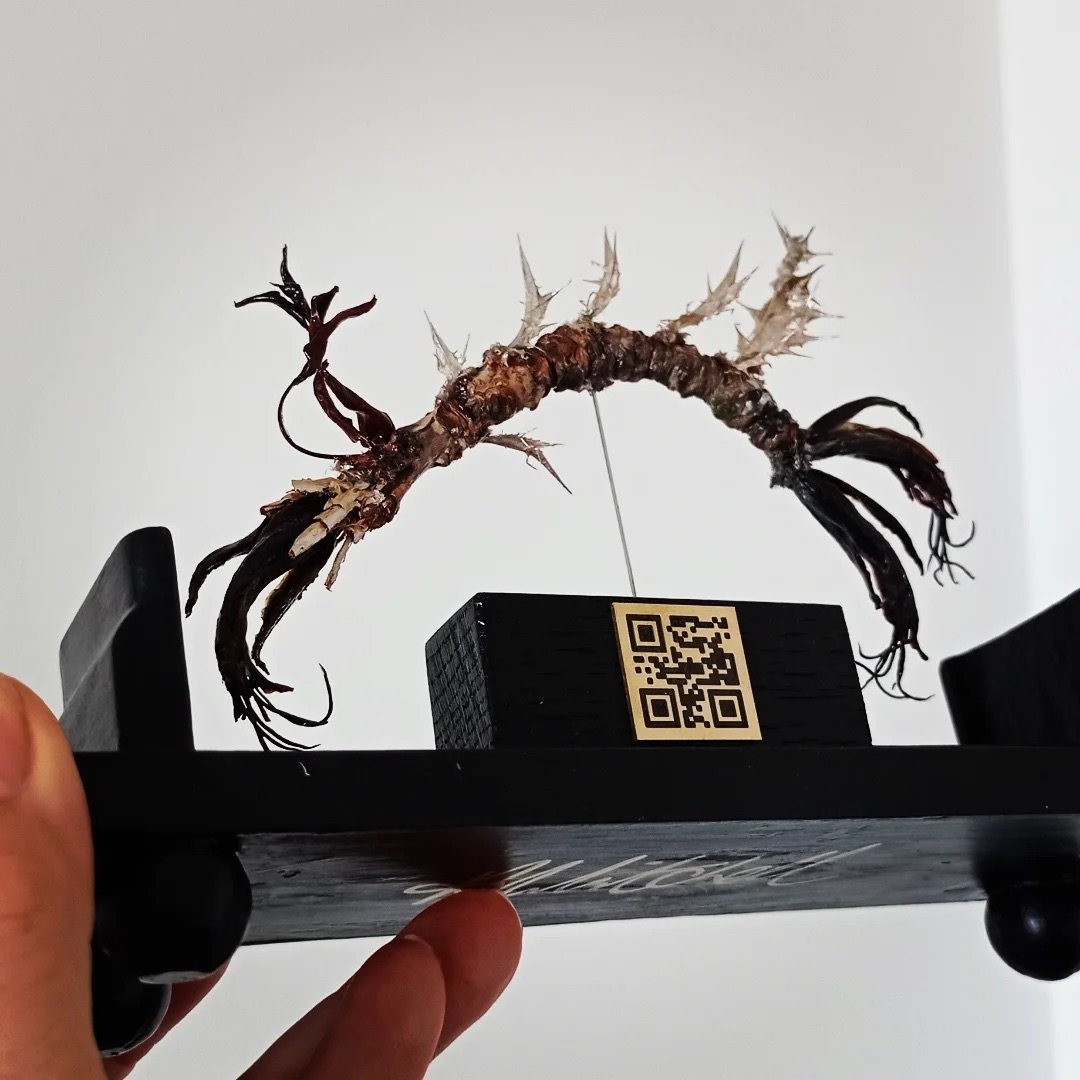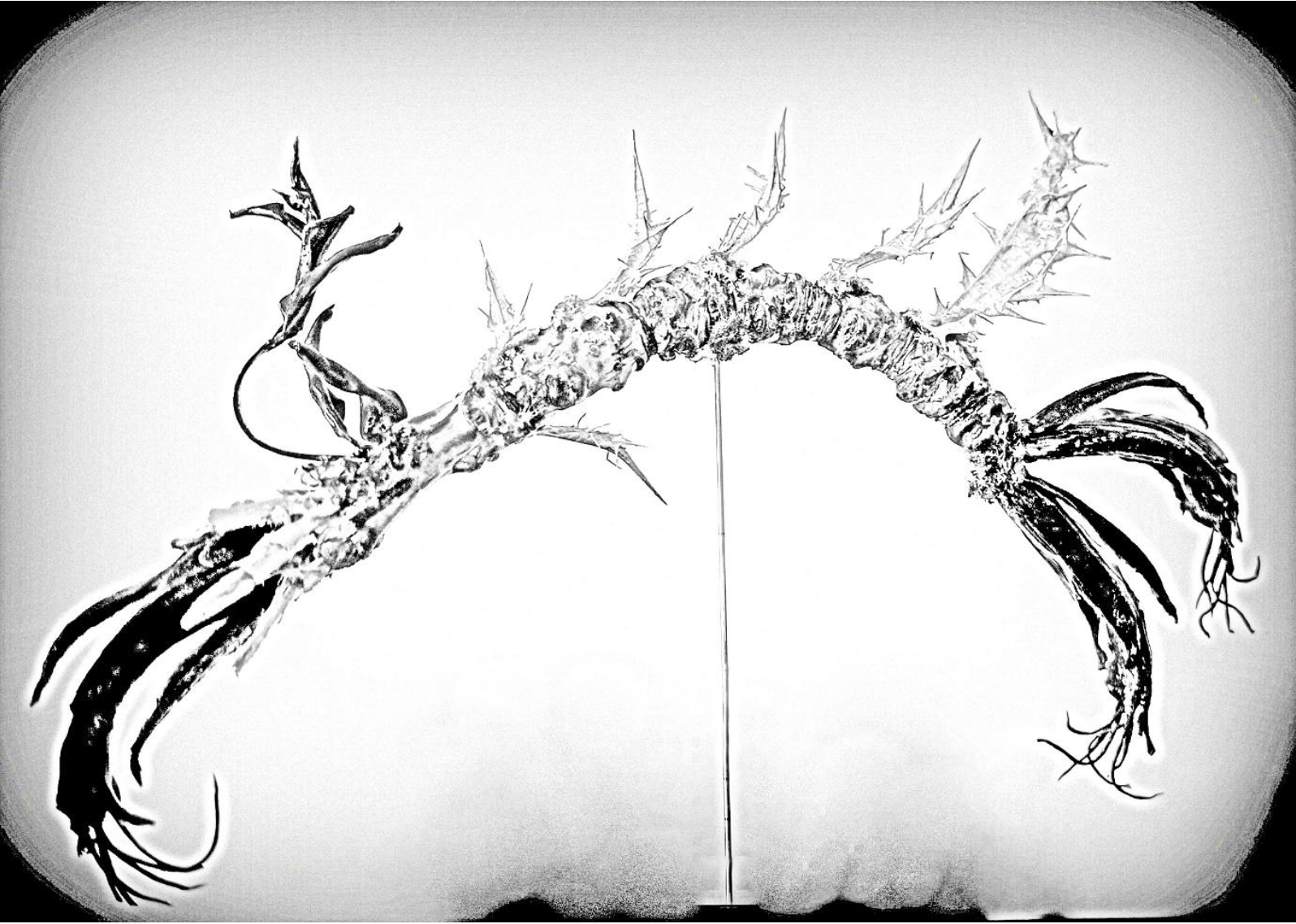Common Name: Gotham Ghoul
Scientific Name: Hirudo manhattan
Specimen Length: 203mm
Specimen Sex: Simultaneous Hermaphrodite
First Described: AD 2021
Description and Habitat: Gotham Ghoul’s direct ancestor, Hirudo medicinalis, or the European medicinal leech, was introduced into the United States in the early 18th century, over a hundred years before treatment using these annelids (or segmented worm) reached almost hysterical heights. Mania for leeches depleted natural populations throughout Europe, increasing demand and importation from breeding populations in New York through the latter part of the 19th century, but these valuable animals were not always treated well, and some were released into the local water system, a cesspool highly contaminated by pollution and pathogenic microbes. As New York industry grew, areas around the docks were particularly prone to disease, industrial waste mixing with domestic sewage as labourers were living cheek by jowl alongside their place of work. Overcrowded tenements lacked access to clean water and adequate waste disposal, and trash was regularly dumped on the streets, until the city passed a law requiring people to dispose of it in the rivers. Infectious maladies like cholera, typhus, typhoid fever, and dysentery killed thousands of New Yorkers each year, especially in slums where the poorer communities were forced to reside. As immigration continued and New York’s population exploded, so too industry expanded. Areas of wetlands and salt marshes at the edges of New York City’s shorelines were increasingly encroached upon, either for industry or construction, and some of the escaped leeches found a way to survive in those toxic habitats, mysteriously evolving at the edges of existence until eventually being discovered over a century ago in AD 2021, their highly sensitive and robust nature a direct result of enduring in such polluted ecosystems.
Being amphibious, Hirudo manhattan can move on both land and in water, and frequently live between the two. Their ideal habitat is small, greenery filled, brackish waterways, where they lie in wait for their prey: mammals passing nearby, usually humans or their pets. Extremely well-developed antennae on both ends of their body are highly sensitive to all types of movement - physical such as vibrations and air flow, visual including light, shadow and infrared, as well as audial and chemical - enabling them to detect a worthwhile meal easily. Their ability to latch on, mould their body to their host, then use their chromatophores to match their colour to their surroundings, means they can feed almost undetected for up to several days at a time. As they can go many months without a feed, Gotham Ghouls seem to be very fussy eaters, only attaching to high-quality victims that can provide sufficient sustenance to sustain them until the next meal.
Although the decline of amphibious species early in the 21st century (due predominantly to habitat loss and reduction in accessible grazing livestock), decimated their leech cousins, Hirudo manhattan survived this worldwide issue by being able to accommodate increasingly inclement weather patterns; these adaptable invertebrates burrow deep underneath the soil’s surface, and are able to survive for months to ride out extreme heat, drought or the frequent hurricanes above. In this state, their bodies become dormant and rigid, until a time when they detect environmental conditions are suitable to emerge again.
Reproduction: Whilst proving very resilient, population numbers are low and scattered, forcing them to keep reproduction a primary focus. As well as providing food, their prey also acts as transport, moving an individual to a new area where the pheromones of other H. manhattans are detected, causing them to drop off and slowly crawl towards the possible mate. As simultaneous hermaphrodites, they have both male and female sex organs, and copulate by intertwining their bodies together, depositing sperm into each other’s clitellar area. Breeding season varies due to environmental concerns but ideally when conditions are moderate; eggs laid at the water’s edge can take 10 to 44 weeks to hatch, depending on their surrounding habitat; however, if circumstances becomes extreme, they may be lost.
Life Span: 2-5 years.






